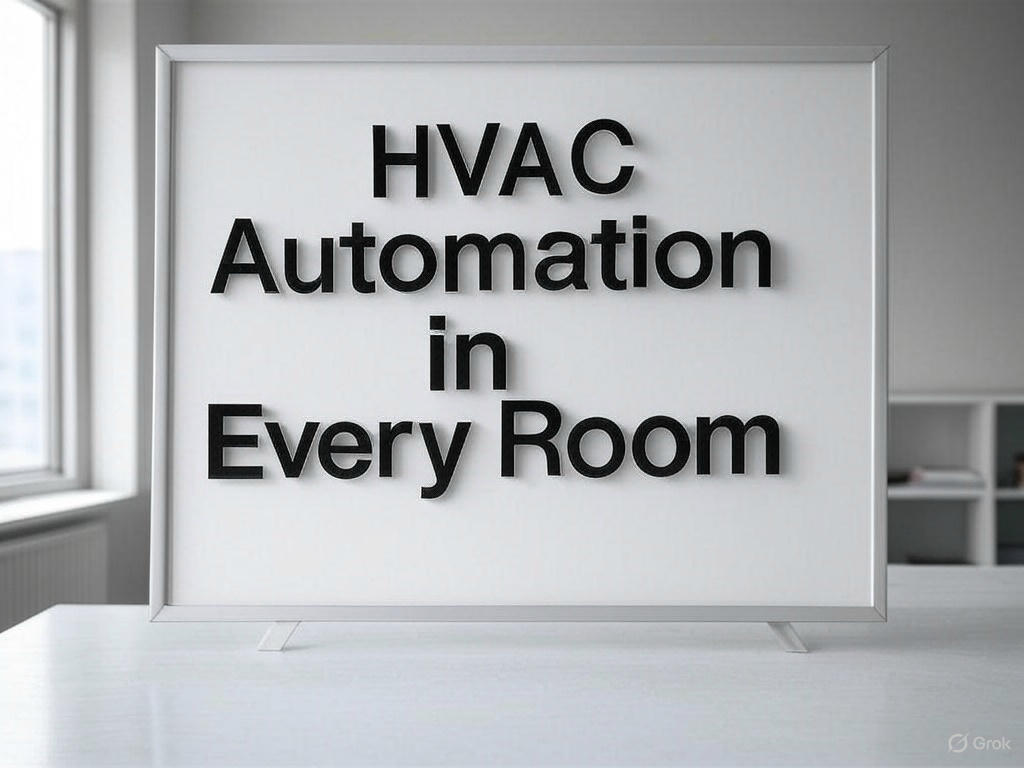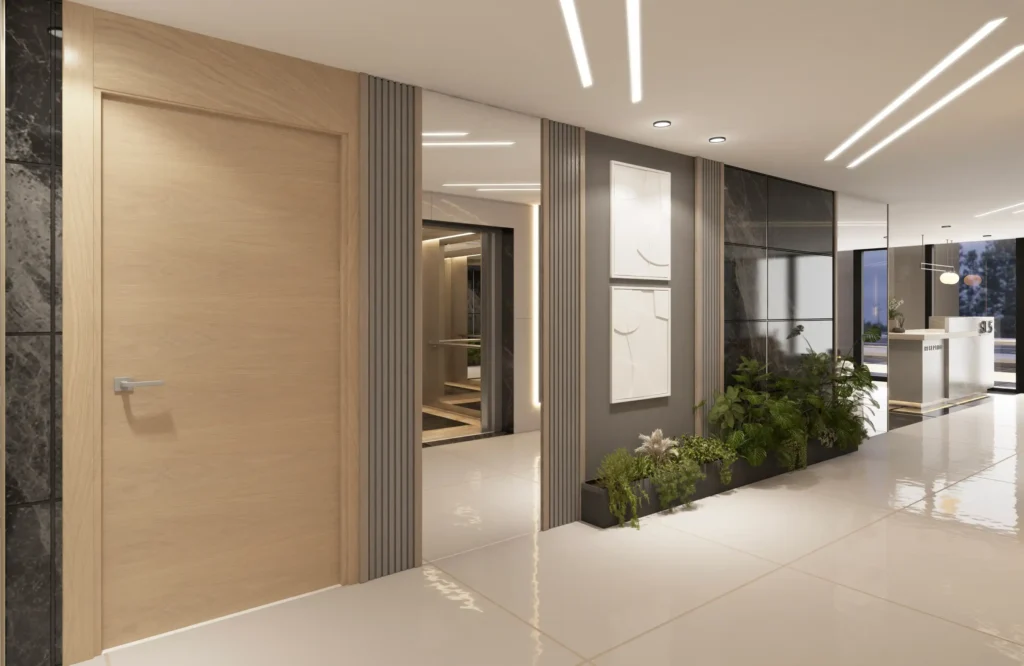Life at home should feel just right—not too hot, not too cold. That’s where home automation HVAC comes in. It’s more than just adjusting the thermostat. It’s a way to manage your heating, cooling, and air quality automatically and smartly. Whether you’re working from home, caring for pets, or raising kids, smart HVAC makes life easier and more comfortable.
Let’s look at how HVAC automation works, what problems it solves, and why more people are turning to this smart tech.
Understanding the Role of HVAC Automation in Smart Homes
What Is Home Automation HVAC and How Does It Work?
HVAC home automation uses smart tech to control heating, cooling, and ventilation. It often involves devices like smart thermostats, sensors, and connected apps. These tools adjust temperature, humidity, and airflow based on time of day, activity in the room, or even the weather outside.
For example, when you leave the house, the system can turn down the heat or A/C. When you return, it adjusts back. Some systems even learn your habits and adjust settings automatically to save energy and keep you comfortable.
Why It’s More Than Just a Thermostat Adjustment
This isn’t just about setting a number on a dial. HVAC automation can work with voice assistants, security systems, and smart lighting. It helps create a full smart home experience. Think about waking up to a warm bathroom in winter or keeping your baby’s room cool during a summer nap. These aren’t just comforts—they’re solutions to daily living problems.
Real-Life Problems Solved by HVAC Automation
Rising Utility Bills and Wasted Energy
One of the biggest headaches for homeowners is high energy costs. Many people heat or cool their homes even when they’re not there. That’s money out the window. Smart HVAC systems help by cutting down on wasted power. They work only when needed and adjust based on room use, saving energy and money.
Uneven Room Temperatures and Hot/Cold Spots
Ever walk from a warm living room into a freezing bedroom? That’s a common issue in homes with old or basic systems. Smart HVAC can use zoning features to heat or cool certain rooms separately. This means no more hot or cold spots—just comfort in every space.
Forgotten Manual Adjustments When You Leave Home
It’s easy to forget to adjust the thermostat when rushing out the door. But with HVAC automation, you don’t have to remember. Geo-fencing tech can detect when you leave the area and make automatic changes to your system. It also knows when you’re coming back, so you return to a cozy home.
Pet Safety During Extreme Weather
If you have pets at home, keeping them safe during heat waves or cold snaps is a must. Smart HVAC systems make sure the temperature stays just right even if you’re not around. You can check in and adjust settings from your phone, keeping your furry friends safe and happy.
Poor Sleep Due to Uncontrolled Nighttime Temps
Sleep is hard when your bedroom’s too hot or cold. Some smart thermostats can track your sleep habits and adjust temperatures through the night. This creates the perfect sleep zone without you even touching a button.
Innovative HVAC Automation Solutions
Smart Sensors and Zoning for Personalized Comfort
Sensors placed around the home detect movement, room temperature, and even humidity. These sensors allow the HVAC system to make real-time changes. For example, it might cool only the rooms being used or turn off the system if windows are open. Zoning systems take this further, letting different rooms have different settings based on their use.
Remote Access and Voice Control via Apps and Assistants
Using your phone, tablet, or voice assistant like Alexa or Google Assistant, you can manage your HVAC system from anywhere. Forgot to turn off the air before vacation? Just do it from the app. Want the living room to be warm before you get out of bed? Just ask.
AI-Driven Learning Thermostats and Predictive Heating
Some smart thermostats use machine learning to understand your routine. They remember when you leave, when you return, and how you like your settings. Over time, they adjust automatically—getting smarter the more you use them.
Integrating HVAC with Other Smart Systems
Smart HVAC systems can talk to other smart devices in your home. When you unlock your front door, the heat turns on. When it’s bedtime, the lights dim and the air cools down. This full integration helps you create scenes or routines for different times of the day.
Challenges Homeowners Face with HVAC Automation
Upfront Cost and Installation Complexity
Smart HVAC systems can be pricey at first. You might need to buy new thermostats, sensors, or even upgrade your whole system. Installation may also require a pro, especially if your current setup is outdated. But many people find the long-term savings and convenience are worth it.
Compatibility Issues with Older HVAC Systems
Not all homes are ready for smart upgrades. Some older HVAC units don’t work well with smart thermostats or zoning. Before investing, it’s important to check if your current system can be adapted or if upgrades are needed.
Data Privacy and Network Security Risks
Like all connected devices, smart HVAC systems use the internet. That means there’s a small risk of cybersecurity issues. Using strong passwords and updating devices regularly helps keep your system secure.
Dependence on Power and Internet Connectivity
If the power goes out or your Wi-Fi drops, some smart features might stop working. Most systems have backup settings or manual controls just in case, but it’s something to be aware of, especially in areas with unreliable service.
Looking Ahead – The Future of HVAC Automation
Energy-Efficient Homes and Sustainability
As more people focus on eco-friendly living, HVAC automation will play a bigger role. These systems help reduce energy use, cut emissions, and lower bills. They’re a key part of creating homes that are both smart and sustainable.
Role of HVAC Automation in Climate Change Adaptation
With extreme weather becoming more common, smart HVAC systems help keep homes safe. They respond quickly to outdoor changes, helping people stay cool during heatwaves or warm during winter storms without wasting energy.
Trends in AI and Smart Living
Future systems may get even smarter, using AI and predictive tech to manage energy during peak hours or adjust settings based on your health data. Imagine your home knowing when you’re stressed and cooling the room to calm you down.
Conclusion: Smart HVAC Is More Than Just Comfort—It’s Peace of Mind
Home automation HVAC systems are changing the way we live. They bring comfort, safety, and savings into our homes without needing constant attention. From keeping pets safe to cutting down energy bills, the benefits are clear.
As technology grows, these systems will only get better—smarter, faster, and more connected. Whether you’re building a new home or upgrading your current one, HVAC automation is a smart step toward a more comfortable future.






